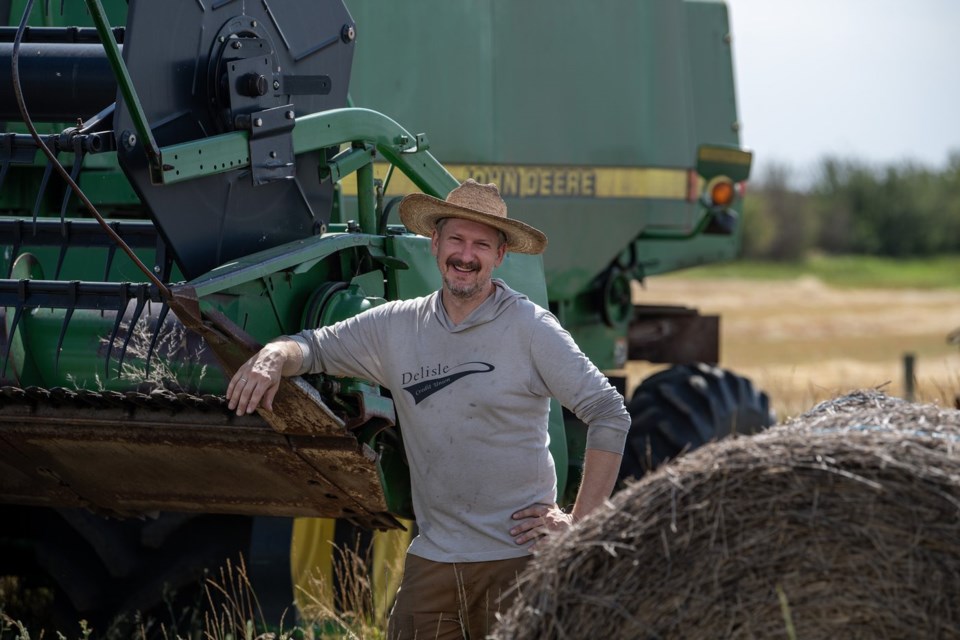REGINA — Will Robbins has been in the process of taking over his family farm southwest of Saskatoon.
The 43-year-old grows organic wheat, oats, lentils, peas and occasionally flax and mustard on 445 hectares of land near Laura, Sask.
In 1996, when he was still a teenager, prices in west-central Saskatchewan were on average $980 per hectare, according to Farm Credit Canada's historical farmland values report.
Last year, they were about $7,410 a hectare.
Robbins said the massive price increases, which noticeably began to skyrocket 13 years ago, has given him pause on whether expanding the farm is doable or practical.
“If you’re a risk-averse farmer and see other risks increasing, like climate instability, it’s harder to think through a massive increase in your debt loads to finance land given the land is not likely to pay for itself over 15 years or 20 years,” Robbins said in an interview.
“Land prices haven’t been the determining factor (for not expanding), but it’s definitely dissuasive.”
Farmland prices across the Prairies have grown for the past 20 years, but they took a marked jump in Saskatchewan in 2011 and have continued to see huge increases since then.
Prices in the province rose 15.7 per cent in 2023, the highest increase in Canada that year. A hectare sells on average for $6,670 to $16,060 depending on where it's located and whether it has irrigation. Values in Manitoba and Alberta also fall within that range or are higher in some cases.
Farmers and analysts say the situation has made it difficult for younger producers to expand their operations and compete with large farms, which have continued to get larger.
Leigh Anderson, an economist with Farm Credit Canada, said it has been a challenge because young farmers tend to not have many assets to finance the purchase of more land.
"It's harder for them to compete against a well-established farm or a farm that's been around for multiple generations," Anderson said.
"That asset base helps (big farms) expand because it's large enough for them to absorb another section of land."
He said increasing prices over the last several years are due to strong crop revenues. Supply is also tight, with many parcels being sold before they make it to public listing websites.
The issue is also double-edged. While some young farmers struggle to get a foothold, older producers looking to sell can reap the rewards of higher prices.
"For producers beginning to talk an exit strategy, it's encouraging to know their life's work is going to return a good value to them when they do retire," said Bill Prybylski, who farms in east-central Saskatchewan and is vice-president of the Agricultural Producers Association of Saskatchewan.
"It's both good and bad."
Prybylski operates on 4,450 hectares near Yorkton, Sask., growing canola, wheat, barley, oats, peas and lentils. He also has a cow-calf herd of 200 head. He said higher prices have been a mixed blessing: it's difficult to expand, but the operation now has additional financial leverage.
"If 10 years ago somebody told me we would be paying the prices we are now, I would have thought them to be somewhat ridiculous. But it’s the reality," he said. "Values have increased and we need to find ways to deal with it."
Some speculate how much influence land owned by out-of-province investors is driving up prices. A report from Re/Max Canada has noted large farming corporations have been buying land, causing values to spike.
André Magnan, a University of Regina professor who researches investor-owned land, reported in 2018 there were 343,980 hectares owned by large institutions that aren't family operated.
He said while it's difficult to quantify the effect of investors, having more buyers in the market will cause prices to increase.
"Most sales are farmer-to-farmer. Investors are a minority," Magnan said. "(Investors) are newer players, newer actors Saskatchewan didn’t have 20 years ago."
Anderson said young farmers looking to expand can instead rent land, but the rental market is also tight. He said they could also set up purchasing agreements with older farmers, allowing them to eventually take over an operation.
Prybylski said the government could make tax changes that encourage those retiring to sell land to locals.
"There are farmers who’ve retired who would gladly sell to a local farmer who would raise kids in the community and support local businesses, rather than someone outside the community just farming the land," he said.
"Convince retiring farmers (that) that’s the way to go."
Robbins said he doesn't see today's land prices worth the value in crops that would be produced.
"I'm seeing my neighbours purchase land knowing it's not going to pay for itself but feeling obligated to do so," he said.
"Farmers used to think of purchasing land as a capital investment in their farm and now they think of it as a way to rent land.
"If you own it and pay a mortgage instead of renting from someone else, they can't pull the land from you. It's a bad bargain but a bargain for stability, I think, for lots of farmers."
This report by The Canadian Press was first published Aug. 25, 2024.
Jeremy Simes, The Canadian Press

